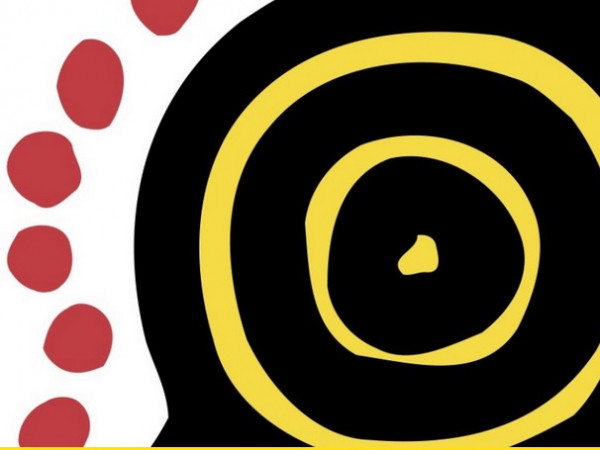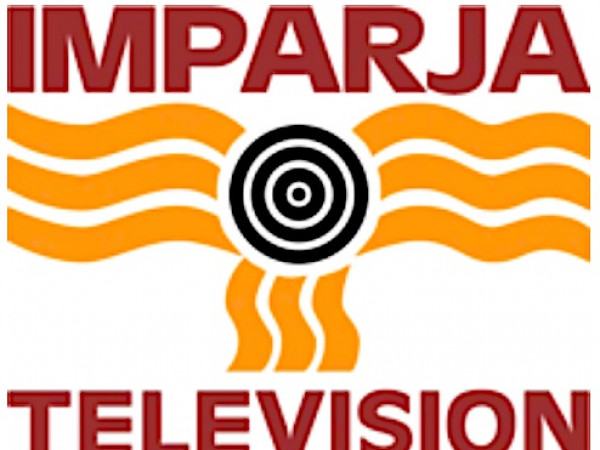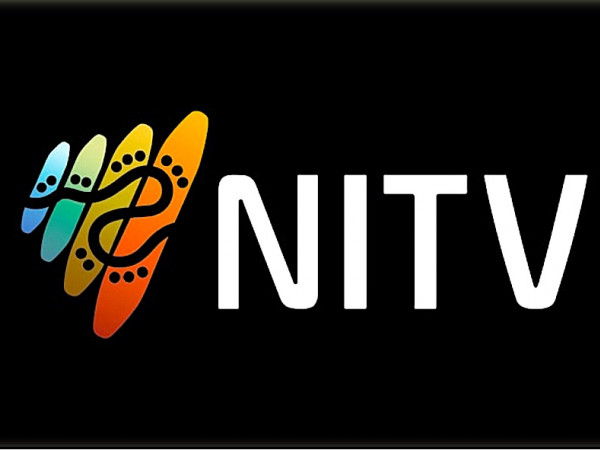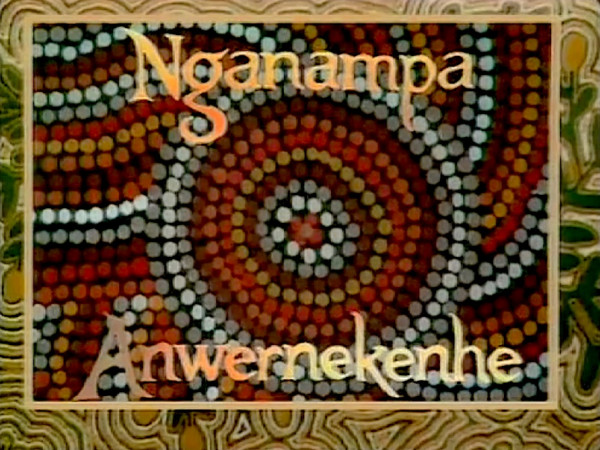Owen Cole
“The funds just weren’t there…”
I was the general manager of CAAMA for about nine years, and you know, so that was looking after the whole of the CAAMA group of companies, which is CAAMA radio, CAAMA music, CAAMA shops and CAAMA productions. I mean it’s an Aboriginal owned and controlled Broadcasting Service, which was set up to promote Aboriginal people, lifestyle, language, cultures - and their achievements in a positive light - you know, as opposed to the negative, stereotypical coverage that we get from mainstream media. And I think on top of that, they provided training and employment opportunities, and I think they've done a pretty good job, CAAMA …as the association, I think they've done a pretty good job. I think their radio service is very good; I think it's their news and current affairs is without a shadow of doubt the best in Australia, with a really heavy slant towards Indigenous matters and access to politicians that are talking …about Indigenous matters. So, I think it's an excellent service. I think it's entertaining, that CAAMA provides a program range that goes across the whole spectrum, demographics, and so I think, all in all, I think it's a great, great radio station which is, that's a core business. And then of course you've got … CAAMA productions which has struggled since forever, and, but it still produces a lot of very important cultural programming and a lot of entertaining indigenous programming. So, I think you know those two, two parts have done well under difficult circumstances, because the funding's always been cut or non-existent. And then of course you've got the CAAMA music side of things, which is the recording - that's been completely de-funded, the federal government that's got no interest in really promoting or funding indigenous music, which is a sad state of affairs. So, you've got to go out and sing for your supper. But I think they've done well, under very tough circumstances, and I wasn't, when I was around it was very well funded – you know, it was receiving probably 300,000 a year, you know which allowed it …to probably do about eight to ten albums per year. I think its funding nowadays is close to zero or thereabouts. So, they have to just get piecemeal funding. But I think they, you know they struggle, and they survive, and that's the story of Indigenous organisations in Australia
And then we had a subsidiary which is Imparja, which is a completely separate company with a separate board. And I wasn't directly involved until I later on, …got on the board and eventually after quite a few years I've served a stint as chairperson
…it seems to me that the main reason why CAAMA got involved with Imparja really was to distribute its, its radio service, [24:49] and you know, in some of the other associated services. And it sprang from that, and it just grew such that they became the owner of what was a commercial television service. It supposedly was commercially viable - I don't think it ever was. It received funding - two million dollars - and that was primarily to cover the transponder costs which I seem to recall were about four million dollars in those days. So, I don't think Imparja really had the capacity to really fund the operational costs besides the, you know, the transponder cost. So, it'd always struggle. So, there was this belief that - by the founders - that it would be the vehicle, if you like, to produce a lot of indigenous programming. Well, the realities of it are that it’s a very poor, very fragile business model that just couldn't do it - the funds just weren't there. And that was proven time and time again. So, what, what in actual fact happened was that responsibility was transferred across to CAAMA, who've managed to secure some funding for Nganampa, the Nganampa series, and from the AFC originally, then when they secured extra funding from Imparja, and then later on from one of the Departments. And… but it's always struggled to really afford to… fund indigenous programming. So, I think, I think the model was severely flawed, not told the owners, and I think time has proven that and then that's become a beast unto itself really. And if you talk to the directors they want it now, they they're quite proud of Imparja, notwithstanding the fact that it doesn't produce a lot of indigenous programming - very minuscule. It does … partially fund Nganampa. And it does, you know, bits and pieces but the fact that it survived, if you talk to the, to the directors … they're very proud of it and the fact that it's Aboriginal…
I mean we tried virtually everything to try and access you know some dollars. I think we all wanted to increase the level of Indigenous programming. Unfortunately, they just didn't have the capacity to do it. I mean we had, you know, we accessed some funding for some programs but it wasn't sustainable. You know the Australian government model doesn't allow for continuity funding so, you know, sporadically we’d do a large production slate and then it’d disappear. And in the end, we ended up … with the Nganampa series basically.
But the realities of that are that Nganampa was about all remote communities and their cultures and their stories and their Dreamtime, so you know CAAMA has managed to …work with the communities to do that programming.
Well I think it's important that, you know, making programs on culture, language and dance is very important - but it's a dynamic thing, it's not something that you stick away in the archives, you know… It's about you know, taking it to the communities and letting them use it to revitalize in some instances, where people have lost part of their culture. I think it's critically important that this type of programming take place…
I was around when Channel 31 was…the idea of channel 31 it was formed and in actual fact it was a guy called Tim Mason and he was chief engineer of Imparja, who came up with this idea of, you know, with compression you know, technology, digital technology that we could squeeze in our programming into three quarters of the transponder which would free up that, that bit of space for you know community television. He was one who promoted it - and the board really accepted it… that channel as its own. Quite obviously you know ICTV came along and there was always this dispute as to who actually owned the channel. You know there was a view of the board was it really Imparja’s - well it was Imparja’s - and we were allowing new access to it, and we support that access and, you know…so yeah I think everyone is pretty supportive of it. And, of course the complication was to arise, which was the National Indigenous Television Service.
We needed some medium to start broadcasting - and the board believed that we had to fill 24 hours. We got to broadcast 24 hours, so that we could accommodate ICTV - Indigenous community television service programming and anything that NITV with it's paltry million a year, and which had to cover transmission costs. So that translated into not too many hours of original programming that we could squeeze it all in together. Now unfortunately relationships through NITV and ICTV just weren't any good from… day one really. And I always tried to be the mediator, tried to get people to work together but it just didn't… work out and it became either/or…
I think it came down to in the end that there was this notion that you know, NITV - even with its small budget - somehow was the quality end of production. And ICTV wasn't up to that standard. I didn't support that, because I think the way television’s going anyhow is, you know, is it’s seeking contributions from the community and so forth - it’s the way to go. But that was the… view held by some management in NITV - and that didn't help the situation. So, I’ve always believed that you could accommodate both, but there definitely was that issue control and whereas ICTV previous, prior to NITV could decide what they wanted to broadcast…. and what they didn't want to broadcast, or what they sent out to the community to broadcast only in certain communities.
You know, it was a bit ‘elitist’ on both sides: one who thought they were ‘quality’ and one who thought there was… was the ‘traditional’ versus ‘contemporary’ and so forth, and never the twain shall meet unfortunately. But you know I think there was grounds to come to some compromise when the dollars are scarce. ICTV was never properly funded. You know it well it was a pretty basic, basic service and you know, Imparja allowed access to that, to that channel for nothing - but they ran that that service on the smell of an oily rag, and you know, I would have loved to have seen a situation where ICTV and NITV could have worked together, and with the new technologies that come and that are coming out at the speed of light - that maybe ICTV could maintain a bit of independence for the stuff that they deemed just suitable for their for their remote communities.
I always was hoping that at some point in time that, that NITV would have the capacity to fund those communities to do that type of programming. And those programs that were deemed suitable for a general audience would be broadcast on NITV. That's not the way it's worked out. In actual fact …my gut feeling is that NITV is probably dead in the water, it’s going to get subsumed by the SBS, the special broadcasting service. I'm hoping that's not the case but I’m not really that that involved. That's my gut feeling that the government's going to take the easy option and plonk us with the SBS.
I mean you just got to look at the Intervention - the government imposing their will on remote indigenous communities, and then trying to spread it out to other Indigenous communities. They're much bolder in what they think they can push on Indigenous communities and some it's blatantly unfair and discriminatory. And I think you know, the fact that they…just haven't funded Indigenous broadcasting sector to the right level. I mean the funding is exactly the same as what it was when I first got involved… there's been no increase for inflation. Meanwhile the number of radio stations has gone from six to 50 with 105 BRACS remote indigenous broadcasting services: it's just been …a joke, and I don't think there's any real commitment from the government - they just pay lip service to… indigenous broadcasting and they get much more - what's the terminology? - interventionist I suppose, in just about everything else they’re doing with Indigenous communities. Which is sad. But the political winds will change again I'm sure.




